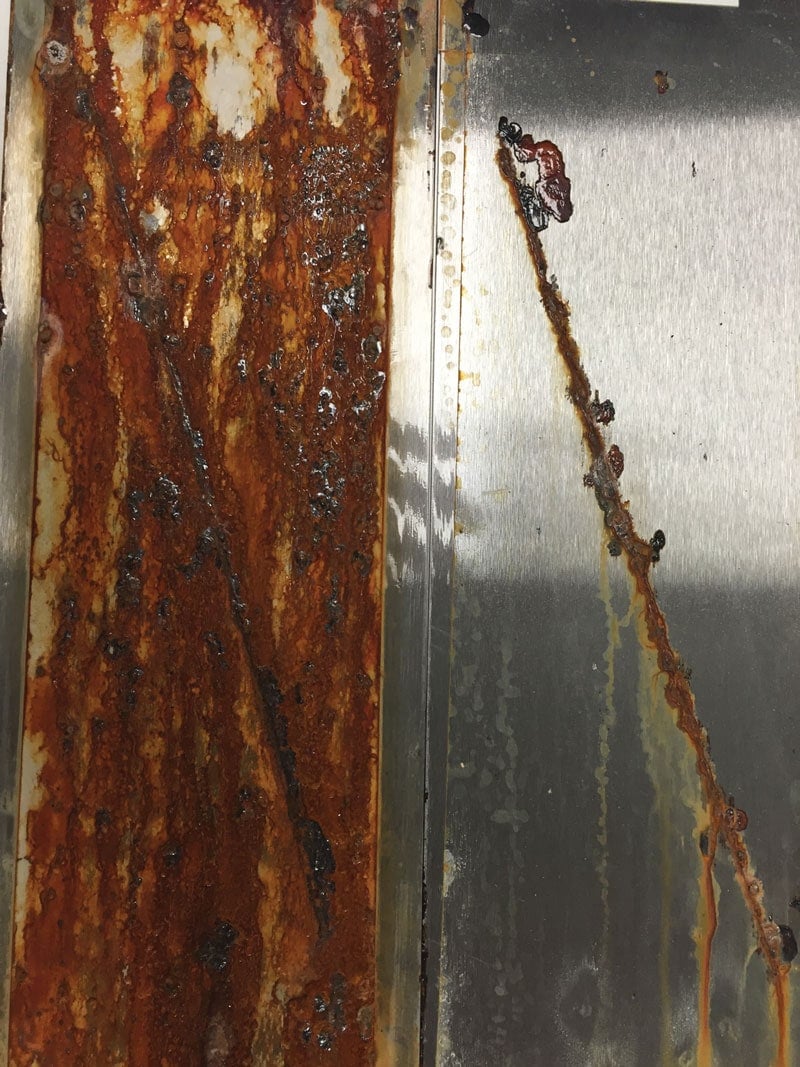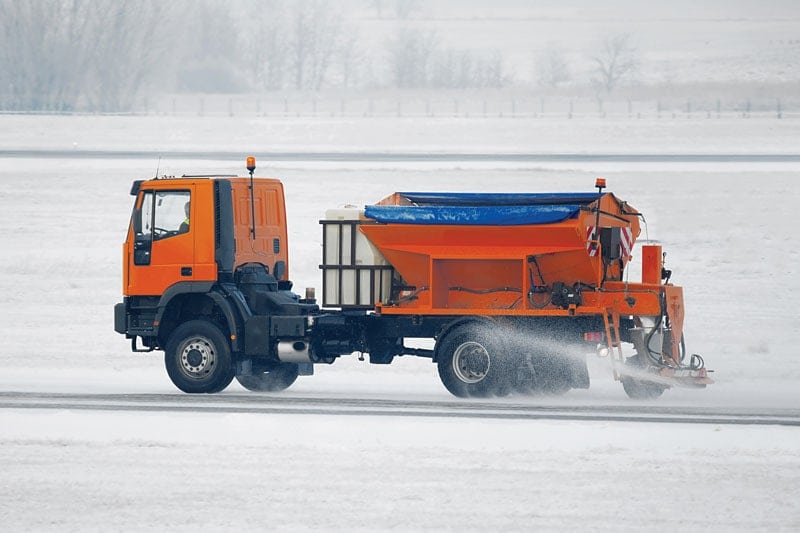Winter raises special challenges for fleet owners. By taking a few basic preventive maintenance steps to protect vehicle underbodies, wash away corrosive deposits and protect electrical systems, fleet owners can go a long way toward making trucks last through more winters.
Garbage and recycling companies in North American regions where winters are harsh will have an extra maintenance challenge to tackle in coming months. Winter means snow, ice, and the application of sand and harsh deicing chemicals to make road travel safer. For fleet owners, winter road treatments threaten future damage to garbage and recycling trucks, as abrasive and corrosive elements spatter up against vehicle undercarriages and bodies. These harsh winter elements will eventually take their toll, rusting vehicle structures and systems and shortening truck service lives. A few simple preventive strategies can go a long way toward protecting against vehicle deterioration, minimizing repairs, and maximizing years of vehicle service on the garbage or recycling route.
Coating Vehicle Underbodies
One of the biggest corrosion prevention steps fleet owners can take is to apply an anti-corrosion coating to truck underbodies and wheel wells. These areas get the brunt of exposure to corrosive deicing salts, sand, and gravel that splash up from the road onto garbage or recycling trucks going about their daily winter routines. Applying anti-corrosion coatings before winter road conditions set in is a simple and practical way to delay eventual deterioration of underbody areas and discourage them from rusting out.
Surface prep is an important factor for achieving maximum possible protection of a coating. If the vehicle is not brand new, chances are that some parts have started to rust and will need to be passivated. This can be done by coating rusty surfaces with an environmentally friendly water-based low VOC rust-converting primer. The primer penetrates the rust, converts it into a passive layer by means of a chelating agent, and protects against further rusting. The primer can be top coated with either solvent- or water-based coatings (see Figure 1).

There are several good topcoat options. For water-based coatings, fleet owners can choose between a rigid or more flexible finish. The first contains especially small organic corrosion inhibitors to help protect against corrosion in micro-cavities and has shown exceptional corrosion resistance for a water-based coating. It can be applied very thin with a pencil hardness of HB-H.
If cracking is a concern, a second more flexible water-based coating with excellent chip resistance can be used. Both types of coating have very low VOC and show good resistance against corrosion in a salt spray chamber. Either type of coating will be dry to touch in 30 minutes or less when applied at an ambient temperature of 77° F (25° C) (see Figure 2).

For extra protection against physical abrasion, a flexible self-healing coating can be used to protect against sand and gravel, as well as deicing salt. This technology is soft and pliable, moisture displacing and also UV resistant. If the coating is scratched, it can easily heal itself back into place.
Washing Away Corrosives
Another good standard maintenance practice for protecting vehicles in the winter is regular washing to remove dirt and corrosive salt deposits on the vehicle body and under-carriage. An excellent way to make these periodic vehicle washes more effective is to use a non-toxic, biodegradable rinse-water additive that neutralizes and removes deicing salts. As an environmentally friendly technology, it does not raise disposal problems and can also be used to protect against flash rust when preparing surfaces for coating (see Figure 3).

The effectiveness of this additive can be seen in its use for Saturn V rocket engines from the Apollo moon missions. The engines, which had been recovered from the ocean, were continually rinsed down with a special blend of surfactants, chelating agents and corrosion inhibitors to protect against flash rust while awaiting restoration. The additive is very effective at removing salt deposits and was used to help remove the rust staining and chloride deposits that the engines had after many years of resting in the ocean.1 The technology can be applied to truck rinse-water for similar effectiveness on deicing salt deposits.
Protecting Electrical Systems
Another area of concern and potential corrosion is vehicle electrical systems. Electrical contacts, sensors and wires are all vulnerable to corrosion, and the risk increases from extra moisture and deicing salt exposure in winter.
Electronics under the dashboard can be easily protected through the use of VCI (vapor corrosion inhibitor) technology in the form of small self-stick emitter cups. When placed inside the dashboard enclosure, these cups emit organic corrosion inhibiting vapors that condense and form a protective layer on metal surfaces. The protective layer does not interfere with electrical performance.
Electrical components such as wires and electrical contacts that are not in enclosed spaces can be protected by spraying them with a very fine corrosion inhibiting cleaner/protector film suited to harsh outdoor conditions. The corrosion inhibitors help reduce repairs and protect against premature failure.
Making Your Equipment Last
Winter raises special challenges for fleet owners, threatening to shorten the service life of vehicles because of the same treatments that help keep roads safe. By taking a few basic preventive maintenance steps to protect vehicle underbodies, wash away corrosive deposits, and protect electrical systems, fleet owners can go a long way toward making their trucks last through more winters.
Cortec Corporation is a global leader in Vapor phase Corrosion Inhibitor technology. This year, Cortec is celebrating its 40th anniversary of providing corrosion solutions across industry sectors. For more information, e-mail [email protected] or visit www.cortecvci.com.
Note
Cortec Corporation. “Saturn V Rocket Engine Conservation.” 20 July 2017.
https://www.cortecvci.com/whats_new/announcements/Casey’s-White-Paper.pdf.
